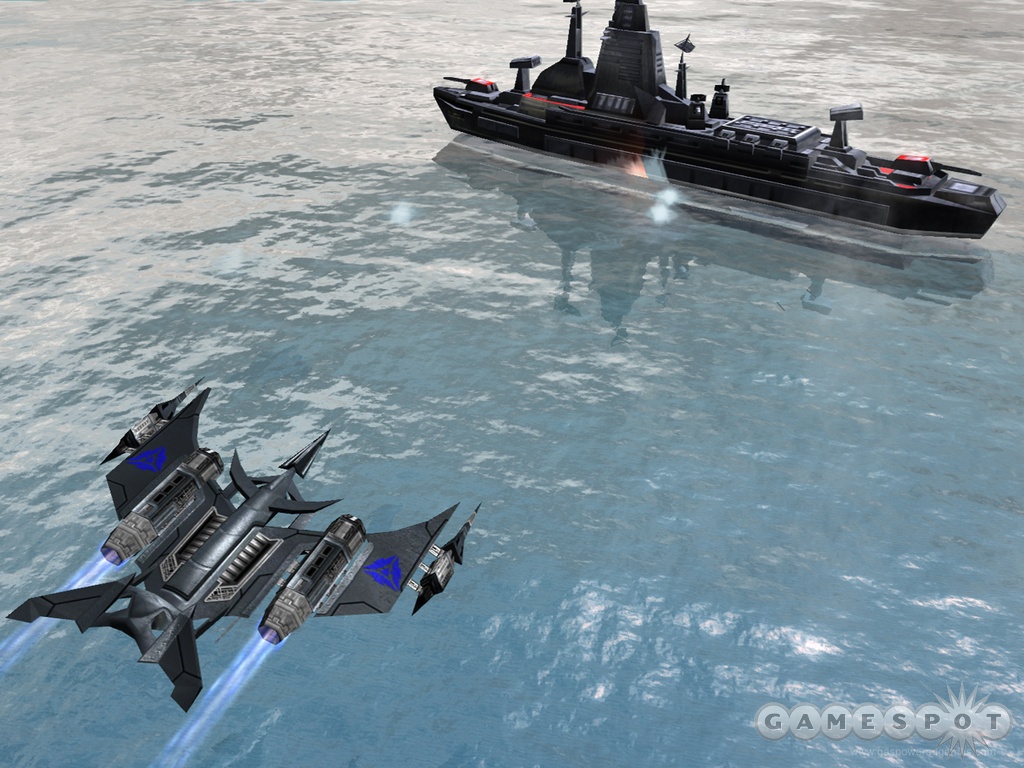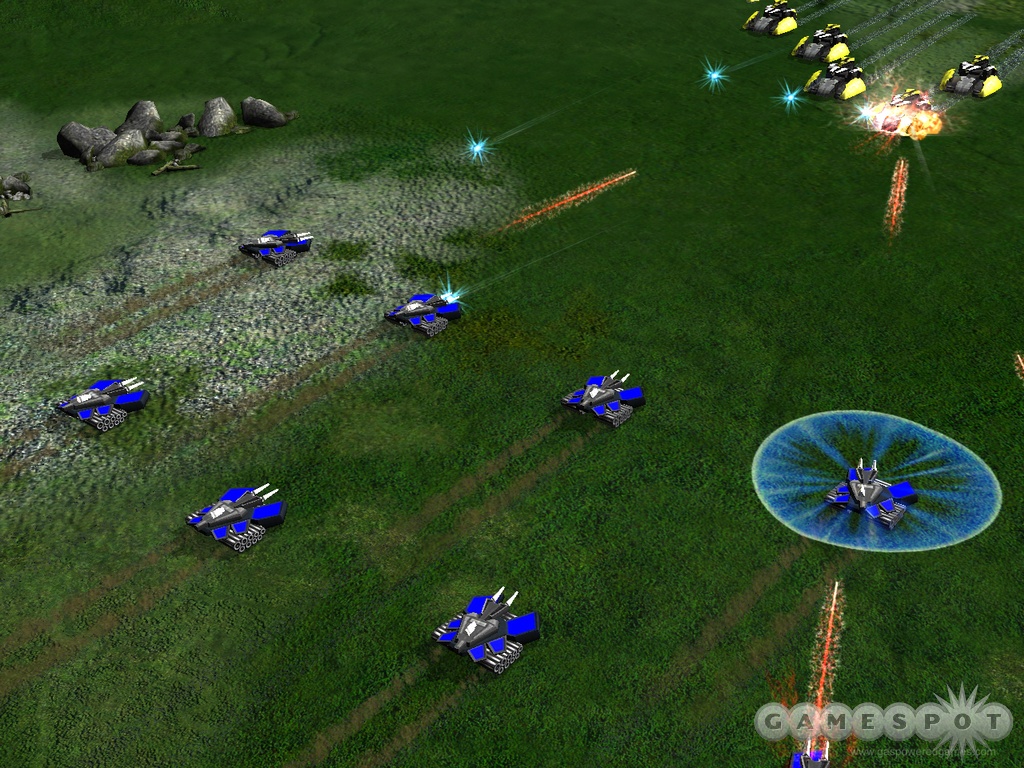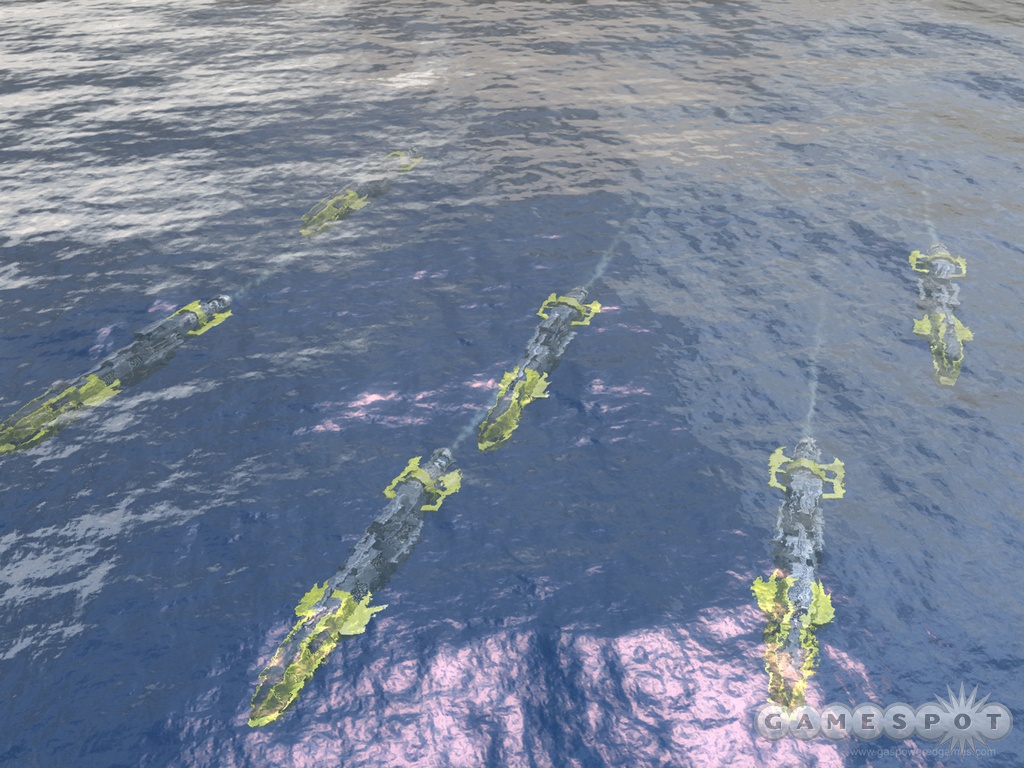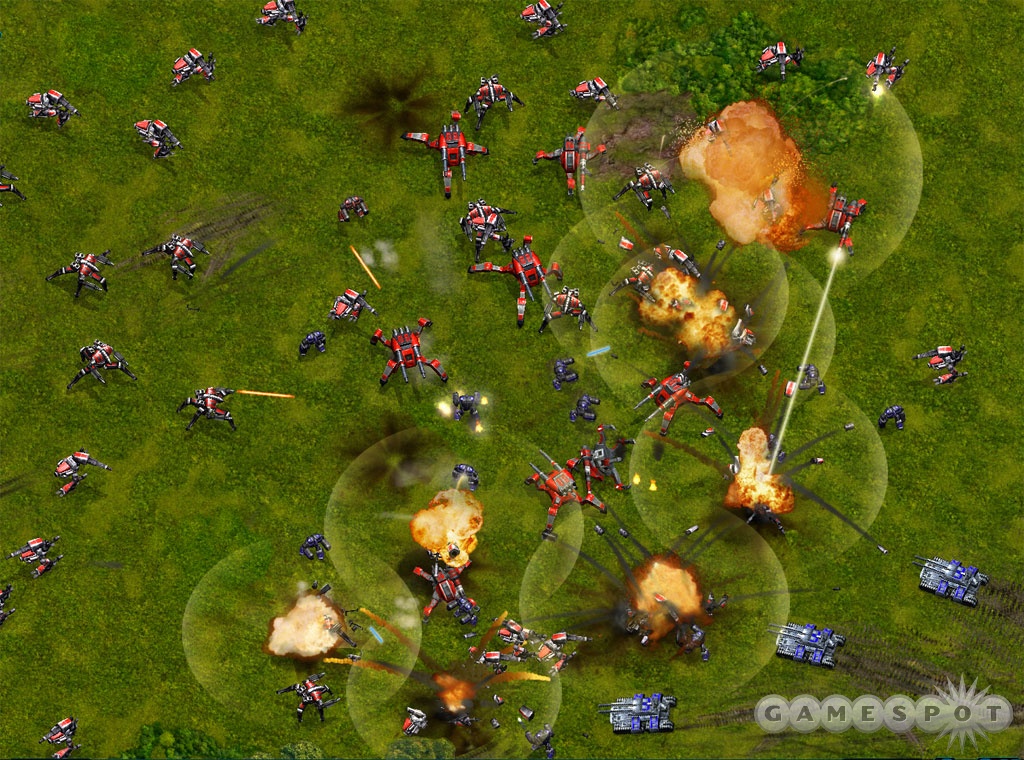Supreme Commander Q&A - What Makes Supreme Commander Unique?
Supreme designer Chris Taylor reveals the early details on his eagerly awaited real-time strategy game, also considered the spiritual successor to Total Annihilation.
Before he founded Gas Powered Games, designer Chris Taylor worked at Cavedog Entertainment, where he helped create Total Annihilation, one of the most popular and beloved real-time strategy games of all time. Now Taylor is looking to revisit the RTS genre with his newest game, the recently revealed Supreme Commander. Considered the "spiritual successor" to Total Annihilation, Supreme Commander looks to deliver a unique style of gameplay to the real-time strategy genre. This is a real-time strategy game that will actually feature a strategic scale, and you may have multiple battles occurring on the map simultaneously. Intrigued to learn more, we caught up with Taylor recently to get the early details on the game, which is due out next year.

GameSpot: So, after Dungeon Siege and Dungeon Siege II, why did you feel it was time to revisit real-time strategy after so many years? And what are your current thoughts on the state of the genre?
Chris Taylor: Ever since I left Cavedog and started Gas Powered Games, I have wanted to do another RTS game; it's just taken a while to get all the details hammered out to make it happen. I think the genre has matured in all of the conventional ways, and this has created an opportunity for us to introduce some great new ideas--stuff that players will be excited to check out and that dramatically changes the experience that everyone has grown very accustomed to over the past eight years.
GS: We understand that you may not be able to make too many references to Total Annihilation, your previous strategy game, because another publisher owns that license. But fans of Total Annihilation (of which there are many) are understandably excited about Supreme Commander, viewing it as a spiritual successor. Are they correct? What can they expect from Supreme Commander?
CT: If you like and enjoy the design sensibilities demonstrated in Total Annihilation, you'll feel the same way when playing Supreme Commander. Supreme Commander pushes the genre in a lot of ways we just couldn't eight years ago, with stuff like full strategic zoom, huge scale difference between units, and the gigantic maps that make battles on an epic scale possible.
GS: There's going to be a focus on strategy in Supreme Commander, much more than what you'd expect in a typical real-time strategy game. Can you explain how that will work? For example, we know that there is a "global" view, and that you can also zoom down to the tactical level for battles.
CT: Indeed, large-scale strategy is definitely what we are injecting into the genre, and in a much bigger way than I believe has been done before. The size of the maps is the key to this. For example, you can't really have nuclear missile submarines that hide in an ocean if you don't have an ocean; lakes and little waterways that skirt the edge of the map don't really allow for this. In Supreme Commander, it's insane; you can have a group of destroyers on a search-and-destroy mission, or a battle group defending a strategic port or "preparing" a stretch of coast for an upcoming beach landing. It's important to be able to watch this sort of thing unfold at a strategic level, but when the shooting starts, you'll want to zoom in (as appropriate) to get a good sense of how the battle is shaping up, and then make tactical adjustments as you see fit.
GS: Can you give us a rundown of the three races in the game? We know their names: the Terrans, the Aeons, and the Cybrans. But is it a case of three identical sides (in terms of gameplay) that just look different, or are they completely different in playing style, as well?

CT: Our goal is to create three "balanced" sides, but not simply by skinning them differently. The fictional universe has a history, and each side emerged from that history with a different twist, something that sets them apart politically, socially, and philosophically. These differences are reflected in the actual unit designs. We still try to give players a rough equivalent, because without it, it can be quite frustrating, but we are definitely averse to simply giving everyone the same unit with a different paint job.
Forget Rock-Paper-Scissors
GS: The early screenshots show some pretty crazy battles, with huge, robotic spider-like units tearing up lots of smaller units. The difference in scale between large and small units is impressive, but how's combat going to work in practice? For example, we've heard you don't like rock-papers-scissors-style balancing. 
CT: Heh, indeed I'm not a fan of rock-paper-scissors, because that was invented for paper games before computers could accurately simulate the battles. Now that we have these superpowerful PCs, we can make the leap, and do it in a really cool, fun way. Players don't have to understand how it all works to use the units effectively, because the system is natural and works much more intuitively than a board game abstraction. When sending 50 tanks to take on a giant experimental spider bot, the player will quickly figure out what works and what doesn't--for instance, don't send them all right up the center if breaking them up and attacking from all sides would be much more effective.
GS: The naval combat in the game is supposed to be a lot more realistic than the naval combat in other real-time strategy games, even though you're still dealing with sci-fi units. How is the system going to work?
CT: If you look at the last hundred years and the evolution of naval combat, you'll find that the battleship is no longer effective; it's been displaced by the aircraft carrier and other specialty ships. We like the romance and majesty of those big powerful ships, and have kept them in the design of Supreme Commander. This does tend to give the game a lot more connection with World War II, at least in the naval department, but not in the overall game. Ships work just the way you'd expect them to in an RTS game, but the biggest difference is the size: They are much more realistic, and can project power much further than players have experienced before. It's a serious threat to have a battleship parked in the waters near your base, with a nine-gun array that can decimate your position in minutes.
GS: The game is named for the fact that your "main" unit is a supreme commander, a gigantic robot that's also a mobile command base. How, exactly, will the supreme commander factor into a typical game? And will you be able to win by simply destroying the other sides' commanders?
CT: The supreme commander is the player's avatar, but destroying this unit doesn't necessarily end the game, unless that is a rule that everyone wants to play with (SUPCOM is a very moddable game, and many different victory conditions will be available at release, as well as allowing players to create their own). The supreme commander is one of the few actual units that have a real human being inside; every other unit is a robot that is being controlled by the supreme commander.
GS: Total Annihilation, your previous RTS, was one of the very first full 3D real-time strategy games. Are you going to push the technological envelope with Supreme Commander in any way? Will you have a crazy amount of realistic physics? A cunning artificial intelligence? Cutting-edge graphics? Any other kinds of remarkable features?
CT: Pushing the envelope with technology is certainly a big part of the project, but it's on an equal footing with gameplay advances. When talking about technology in games, we often mean graphics, which we do indeed push with the latest shaders and so forth. And you are right to assume we'll have physics as well. And we also push our AI, with the introduction of a "personality archetype" system, which I hope to talk about more in the coming year. Oh, and since we're listing off a bunch of the key areas of focus, I'll toss in our advanced pathfinding system that will allow a unit to instantly find a path across the busiest battlefields and largest maps.
GS: Though we understand if it's a bit early for major details, can you tell us about the multiplayer plans for Supreme Commander? Are you planning any kind of new, revolutionary modes? Are there things about multiplayer features in recent real-time strategy games that bug you?

CT: We do indeed have some unique and interesting plans in this area, but we're keeping our cards hidden for a while yet. I can tell you that one cool thing we will have is cooperative multiplayer, with up to eight players working together. We're also keying in on innovating a lot of the "little things" that should improve the overall multiplayer experience in a big way.
GS: Finally, do you have any final words about Supreme Commander? How long have you been working on the game, and when can we expect it to wrap up?
CT: Everyone on the team is very passionate about the game, and many of us have waited a long time to work on it. We're patient, though, and we want to get it right, because we know a lot of people have very high expectations for what we are doing. We officially started working in January 2004, and we currently expect it to be completed by the end of next year.
GS: Thanks, Chris. We're looking forward to it.
Got a news tip or want to contact us directly? Email news@gamespot.com
Join the conversation